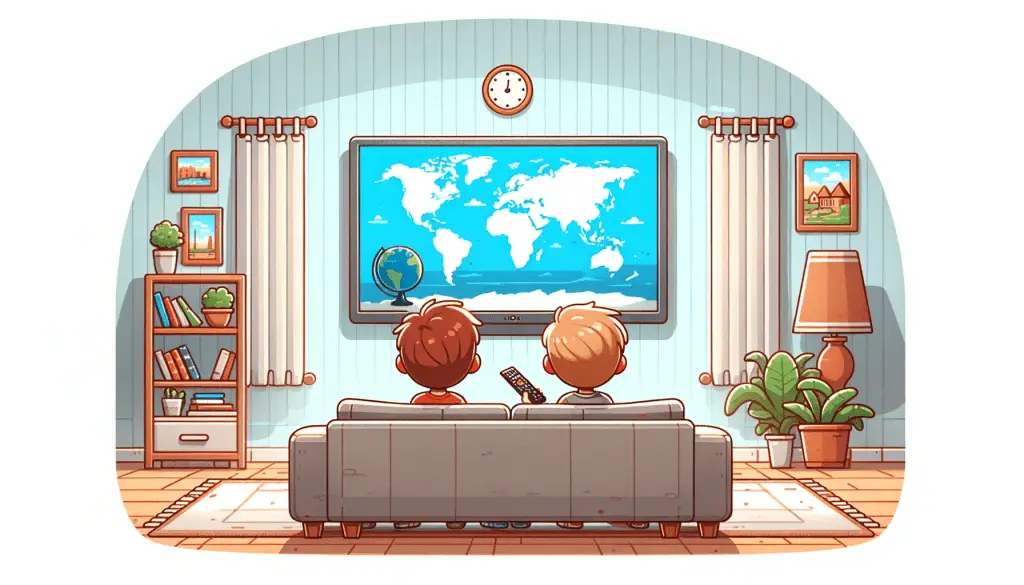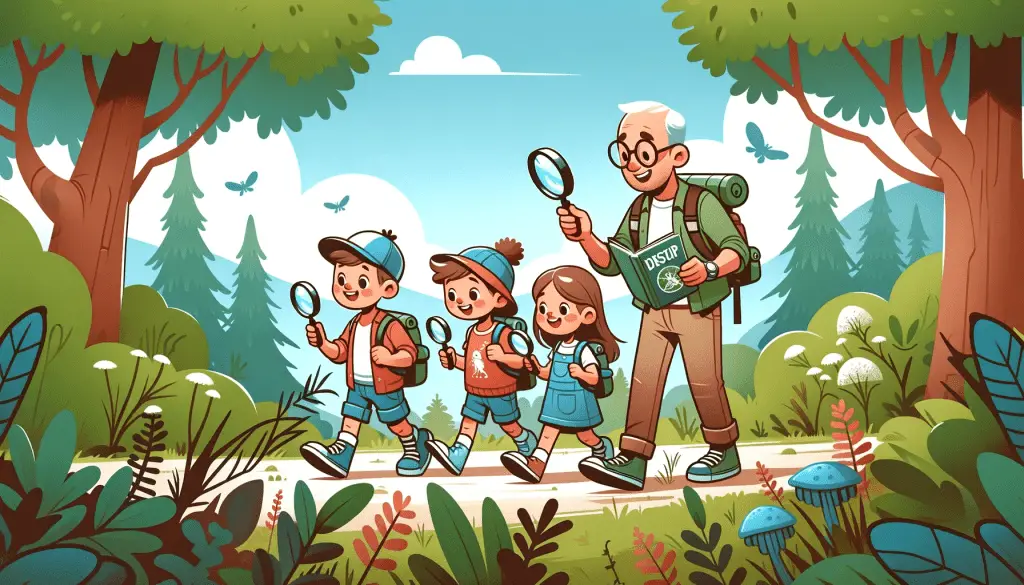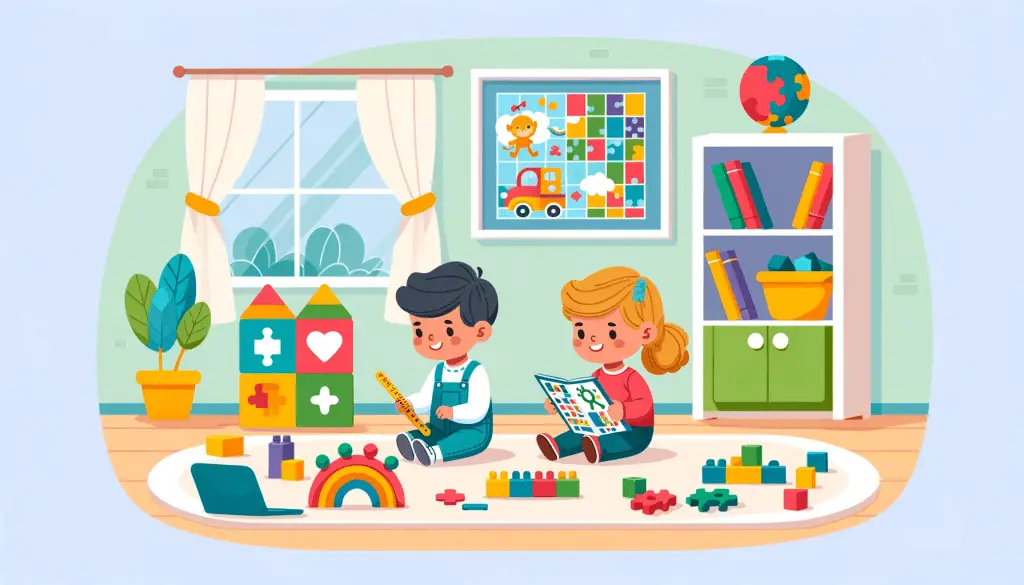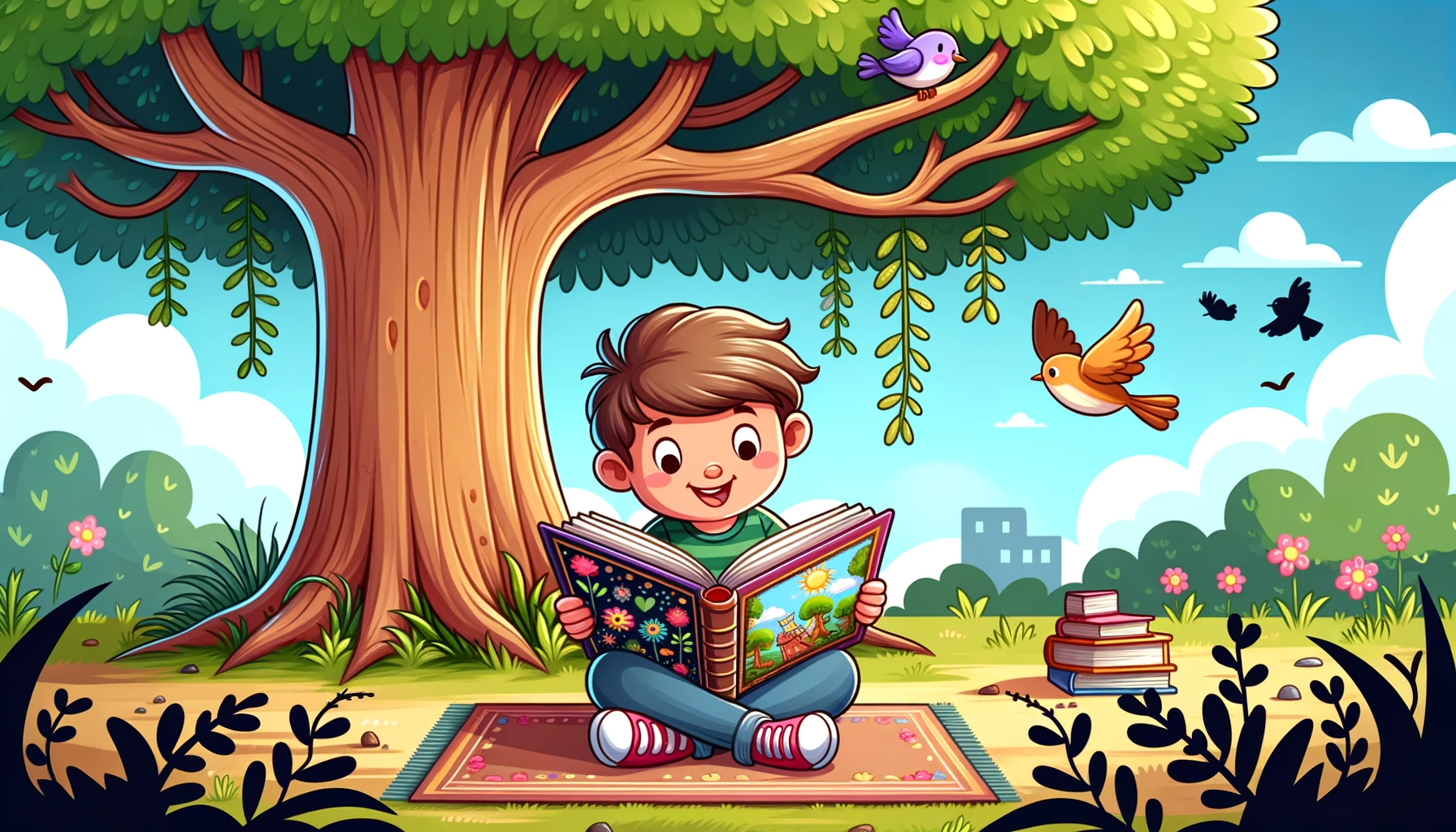Are you on the lookout for some cool and snazzy ways to give your child’s learning a little extra oomph? This post is filled with fun ways to boost your kids’ learning and keep them engaged doing it.
With so much tech and so many resources just a click away, there are a ton of exciting options to explore. Let’s dive into some top tips to make learning at home a supercharged, fun-filled adventure!
Learning Through Play With Apps
Math Whiz Apps
Okay, hear me out. Kids often dread math homework, but what if math felt more like a video game? That’s where math-focused apps come into play. They turn math problems into epic quests and challenges. Imagine your child solving complex equations to slay dragons or unlock hidden treasures. Apps like DragonBox Numbers or Prodigy take core math concepts and disguise them as interactive adventures. It’s a win-win: kids get to game, and they walk away with some serious number skills.
Language Boosters
You’ve read bedtime stories, but have you ever had the story talk back? Language booster apps do just that, making reading an interactive experience. Apps like Epic! or ABCmouse offer a range of stories tailored to different reading levels. They often include quizzes, puzzles, and other interactive elements that test your child’s understanding of the text. So not only do kids get to read a fun story, but they also get to play around with the words in it. They’ll be boosting their vocabulary and mastering grammar rules without even realizing it.
Creative Building
Picture this: your child as an architect, fashioning their own little worlds. Some apps give kids the power to design, build, and even code their own creations. Minecraft is the big one, of course, but there are others like Toca Builders or The Robot Factory. These apps aren’t just games; they’re tools for creativity and spatial intelligence. By planning structures or assembling robots, kids learn to think three-dimensionally. Plus, seeing their creations come to life is sure to ignite a spark of pride.
Quick Heads Up
Lastly, not all apps are created equal. Before you hand over the tablet, take a moment to check out the app yourself. You’ll want to ensure that it’s a good fit for your child’s age and developmental level. Look for apps that are not just fun but also have educational merit. Some platforms even offer parent dashboards where you can track your child’s progress. Safety features are also crucial; make sure you’re comfortable with the privacy settings and any social features.
So go ahead, let screen time be both fun and educational!

World Adventures From The Couch
Who says you need a passport to go globe-trotting? While we might not be packing our bags for a trip just yet, the adventure doesn’t have to stop. Virtual field trips are the golden ticket here. They can whisk your child off to far-flung places like the Egyptian pyramids or the Great Barrier Reef, all without leaving the living room. Not only are these adventures incredibly engaging, but they also offer a rich educational experience. Kids get the chance to learn about different cultures, ecosystems, and historical landmarks. It’s like having a mini geography and social studies class, but way more exciting.
Museums Galore
Forget about long lines and pricey tickets. Now you can stroll through some of the world’s most famous museums, right from the comfort of home. I’m talking about places like the Louvre, the Smithsonian, or the British Museum, offering virtual tours that are both interactive and informative. This isn’t just scrolling through pictures; many tours allow you to zoom in on specific artifacts, read up on their history, and sometimes even interact with exhibits. It’s like having a personal guided tour, minus the large crowds and sore feet.
Historical Hotspots
How cool would it be to stand inside the Roman Colosseum without actually flying to Rome? Virtual tours can take your child to historic landmarks like this, and many more. These tours are often packed with cool features, such as 360-degree views, clickable information points, and narrated histories. It’s a fantastic way to dig into the layers of our past and understand how history has shaped our world today. Whether it’s the Great Wall of China or the ruins of Machu Picchu, these virtual visits make history come alive.
Nature Expeditions
The great outdoors might be out of reach for now, but that doesn’t mean nature is off-limits. Virtual expeditions can take you from the depths of the ocean to the peaks of the Himalayas. Websites like Google Earth allow you to dive into natural wonders, explore terrains, and even observe wildlife in their natural habitats. Imagine tracking polar bears in the Arctic or wandering through the Amazon rainforest; it’s a hands-on way to learn about biology, geography, and environmental science.
Cool tip:
While you’re jumping from continent to continent online, installing a VPN on your router is a good idea. It’s essentially like having a personal security guard for your internet, ensuring that your family’s online adventures remain safe and secure. This allows you to focus on the fun part: exploring the world, one click at a time.

Kitchen Science: More Than Just Cookies!
The kitchen: where culinary magic happens, right? But it’s not just for baking cookies or cooking up a family dinner. You can actually turn your kitchen into a mini science lab for some awesome experiments that aren’t just fun, but educational too. The best part? Most of these activities require ingredients you probably already have on hand. So let’s put on those optional (but super cool) safety goggles and get started!
Volcano Eruption
If you’ve got baking soda, vinegar, and food coloring, you’re set for an explosive good time. This classic experiment helps explain the concept of acid-base reactions. You place the baking soda in a small container, like a water bottle, and then add a few drops of food coloring. Pour in some vinegar and watch the colourful, frothy volcano erupt! Kids not only get a visual spectacle but also learn how different substances react when combined. Take it up a notch by discussing why the reaction happens and how real volcanoes work.
Density Tower
Ever wondered how you can teach density without the snooze factor? Enter the density tower experiment. It’s like a rainbow in a jar but with a science-y twist. You layer liquids of varying densities—honey, corn syrup, dish soap, water, and oil—into a clear glass. The result is a visually stunning column of liquids that just don’t mix. The kicker? Try adding small objects like grapes, popcorn kernels, or a paperclip and guess which layer they’ll land on. It’s a memorable and hands-on way to understand a seemingly complex concept.
Homemade Slime
Kids and slime are like peas in a pod—they just love it. This sticky, stretchy concoction isn’t just fun to play with; it’s also a cool way to introduce polymers and non-Newtonian fluids. All you need are ingredients like glue, baking soda, and contact lens solution. Mix them up, and voila—you’ve got slime! Feel free to jazz it up with glitter or food colouring. Your child will be so engrossed in the ooey-gooey fun, they won’t even realize they’re learning about chemistry.
Safety First
Turning your kitchen into a makeshift lab is all sorts of fun, but safety is key. Make sure you’re supervising the kids, especially if you’re using items that could be hazardous if ingested or put in the eyes. Safety goggles might seem a bit overboard, but they’re actually a great way to make your child feel like a real scientist. Plus, they protect those precious peepers.
So there you have it—a day of scientific discovery that involves zero trips to a specialty store. And who knows, maybe you’ll discover a future chemist or geologist in the making!

Spin A Tale: It’s Storytime!
You know the magic of a good story—it can whisk you away to fantastical worlds and introduce you to characters you’ll never forget. Now, how about letting your child take the wheel in the storytelling journey? Not only does this help foster creativity and imaginative thinking, but it also improves their language skills and confidence. Here are some awesome ways to make storytime a participatory adventure.
Picture Prompt Tales
Think of this as a writing prompt, but way more visually engaging. You can flash an image on your tablet or show them a picture from a magazine—anything that could stir their imagination. Then, ask them to create a story around it. Maybe it’s a photo of a mysterious forest; what magical creatures might live there? Or it’s a picture of a bustling city; who are the people walking those streets and what are their stories? The possibilities are endless, and your child gets to be the director of their own narrative.
Chain Stories
Talk about a twisty-turny adventure! You start off the story with a sentence or two, and then your child picks up from there. Keep taking turns, adding on to the narrative. One moment you could be following a pirate searching for treasure, the next you’re meeting talking animals in a secret kingdom. You’re not just sharing a story; you’re building it together, brick by brick. And because it’s so collaborative, it’s a fantastic way to spend quality time while flexing those creative muscles.
DIY Book
This one is for those kids who love arts and crafts as much as they love storytelling. Once they’ve crafted their tale, why not immortalize it in their very first book? They can write it down, add hand-drawn illustrations, and even make a cover. Then help them bind it together using materials like string, staples, or even a hole punch and some ribbon. When they hold their finished book, they’ll not only feel a sense of accomplishment but also learn the value of seeing a project through from start to finish.
Extra Fun: Dive into the Costume Box
Let’s be real; kids love to play dress-up. So, why not bring their stories to life by acting them out? Whether it’s putting on a pirate hat, donning a princess gown, or making a cardboard robot suit, the added layer of role-play makes storytelling even more thrilling. It’s like live theatre right in your living room!
So the next time you’re looking to enrich your storytime routine, consider these options. Whether your child is spinning tales about magical kingdoms or creating their very own book, you’re helping them develop invaluable skills while having a blast.
Math In The Wild (Or Just Outside The Classroom)
Who says math is confined to textbooks and blackboards? Nope, math is all around us, and you don’t need to be in a classroom to see it in action. From grocery store aisles to kitchen countertops, opportunities for teaching math in the real world are abundant. The beauty of this approach is that it takes math off the page and puts it into context, making it more relatable and far less intimidating. So let’s break down some awesome ways you can integrate math into everyday adventures.
Grocery Store Challenges
Ah, the grocery store—a land of endless mathematical possibilities. On your next shopping trip, make it a fun challenge for your child to estimate the total cost of the items in your cart. Round up or down to make the math easier. Once you’re at the checkout, see how close their estimate was to the actual total. It’s an engaging way to practice addition and estimation.
But why stop there? Teach them about unit pricing to determine the best deals. Is the bigger box of cereal really a better buy? Let them figure it out! And if they have an allowance to spend, task them with calculating how many candies or stickers they can buy without going over budget. It’s practical math that also encourages responsible spending.
Cooking Conundrums
The kitchen isn’t just for science experiments; it’s also a haven for math. Whether you’re baking cookies or whipping up some spaghetti, measurements are your playground. Ask your child to help you measure ingredients and talk through the process. Want to double the recipe? That’s a great way to introduce multiplication. Need to make only half a batch? Perfect for teaching fractions!
And let’s not forget about timing! If the cookies need to be in the oven for 12 minutes and you want to bake three batches, how long will you be baking? It’s a simple way to incorporate multiplication and addition in a real-world scenario.
Time Troubles
Time can be a tricky concept for kids, but you can make it easier to grasp by putting it into context. For instance, if you’re planning a movie night, ask your child to figure out what time the movie will end based on its duration. Or during a road trip, you could ask them to calculate the estimated time of arrival based on speed and distance. It’s like your own little word problem but way more fun because it’s happening in real time.
In a nutshell, math doesn’t have to be confined to schoolwork. By introducing these concepts in everyday activities, you’re not only reinforcing what they learn in school but also showing them how useful and, dare we say, enjoyable math can be. And who knows, they might just start seeing math problems as fun challenges to solve rather than chores to dread.

Nature Walks: An Explorer’s Dream
A stroll through the great outdoors is more than just a chance for some fresh air; it’s an incredible learning playground. The best part? The education on offer is so engaging, that your child won’t even realize they’re learning. From biology to geography, meteorology, and even art—nature walks can be a wholesome, multifaceted educational experience. So grab that explorer’s hat, and let’s get going!
Flora & Fauna Journal
Sure, snapping pics on your phone is great, but how about kicking it old-school with a notebook and some coloured pencils? Encourage your child to document the variety of plants, animals, and insects they encounter. They can sketch a flower, jot down how a certain plant smells, or even describe the bird calls they hear.
Over time, this journal becomes more than just a keepsake; it’s a personal field guide. Plus, it helps improve their observation skills, expands their vocabulary, and enhances their understanding of biodiversity. To up the ante, you can later research some of the species you encountered and learn about their roles in the ecosystem.
Scavenger Hunts
There’s something inherently exciting about a quest for hidden treasures. Draft up a scavenger hunt list before you set out. Include easy finds like a fallen leaf or a smooth rock, but also add more challenging items—perhaps a feather or a type of bark. It’s not just about ticking off a list; it’s about engaging multiple senses. Feel the textures, sniff the flowers, or listen to specific animal sounds.
Besides honing their observation and identification skills, scavenger hunts are also excellent for developing problem-solving abilities. They’ll start to think about where they’re most likely to find each item, whether it’s up in a tree or hidden under a bush.
Weather Watch
Mother Nature isn’t just about what’s on the ground or in the trees; it’s also about what’s happening in the sky. Use your nature walk as an opportunity to delve into some amateur meteorology. Discuss the cloud formations—are they fluffy cumulus or streaky cirrus? Encourage your child to identify patterns or even predict what the weather will be like later based on the clouds.
Don’t forget to look up when the sun goes down! The moon and stars are their own fascinating lesson in astronomy. Is the moon full, or just a sliver? Can they identify any constellations? It’s a beautiful, natural way to open up discussions about space, lunar cycles, and the universe.
So the next time you’re yearning for some quality time outdoors, remember that nature walks are more than just a leisurely activity. They’re packed with opportunities for learning, discovery, and creating lifelong memories. And yes, they’ll likely spark questions you might need to Google later, but that’s all part of the fun!

Toys With A Brainy Twist
Gone are the days when toys were just simple distractions. Modern toys are multi-functional marvels that engage young minds at multiple levels. They’re designed to be fun—yes, but also to stimulate curiosity, build skills, and open doors to new interests. Below are some categories of toys that seamlessly blend playtime with learning, all while keeping the fun factor front and center.
Robot Kits: Mini Engineers in the Making
Don’t let the word “kit” fool you; these aren’t mere toys but rather the springboards to the fascinating world of robotics. More than just assembling parts, robot kits offer a full-on educational experience. They come with everything you need to construct a functioning robot, and that’s just the beginning.
Once assembled, the real fun starts. Most kits are designed to introduce your child to basic coding. They can program their robot to walk, talk, or even dance. As they tweak and refine their code, they learn the principles of software engineering, problem-solving, and logical reasoning. Best of all, every “Eureka!” moment, when their code works as intended, provides a huge confidence boost.
Puzzling Times: Not Just Pieces on a Board
Sure, puzzles and board games are fun, but they also present opportunities for some serious mental gymnastics. Take 3D puzzles, for example; they’re more than just a jigsaw with an extra dimension. They encourage spatial awareness, hand-eye coordination, and patience. Your child will need to think in three dimensions, imagining how pieces fit together from different angles.
And let’s not underestimate the value of a good, challenging board game. Games that require strategy and forward-thinking, such as chess or Settlers of Catan, help develop critical cognitive skills. They’ll need to think several moves ahead, anticipate opponents’ actions, and adjust their strategies on the fly. All this while learning to cope with wins and losses—a lesson in emotional intelligence.
Art Kits: A Canvas for Imagination and Skill
Creativity isn’t something you can easily quantify, but its value is immeasurable, especially in a child’s development. Art kits come in all shapes and sizes, from painting and drawing sets to sculpting kits with clay or even crafting kits for making jewelry or toys.
When a child paints, draws, or sculpts, they’re not just having fun; they’re also honing fine motor skills, learning about colour theory, and experimenting with forms and structures. Over time, this can help them understand more complex concepts like perspective or even the emotional impact of different colours and shapes. Plus, the concentration required for these activities is a great exercise in focus and patience.
In essence, toys have evolved far beyond mere playthings. They’re now complex, educational tools that encourage your child to explore, question, and grow—all while having a blast. So the next time you’re shopping for a new toy, consider the incredible range of options that cater to both the fun and the formative.
Chatterbox Moments: Talk The Learning Talk
Conversations aren’t just about chit-chat; they’re incredibly effective tools for learning and mental growth, especially for kids. When you turn idle chat into meaningful discourse, you’re giving your child the skills to think critically, express themselves clearly, and understand the world around them. Let’s look at different approaches that transform talk time into teachable moments without losing the fun.
News Recap: Tiny Journalists at Home
Start with a daily news roundup tailored to your child’s age and interests. Whether it’s an environmental initiative, a new space discovery, or even updates on their favourite animals, there’s plenty to discuss. Guide them through the who, what, when, where, and why.
Ask open-ended questions that require more than a yes-or-no answer. For instance, “How would you have handled that situation?” or “What other solutions can you think of?” It’s a great way to get them thinking critically and offers insights into how they interpret the world around them. Plus, it’s an excellent opportunity for them to learn new words and improve their vocabulary.
What-If Scenarios: Thinking Outside the Box
Engaging in “What-If” games can be both entertaining and intellectually stimulating. Posing hypothetical questions like, “What if you were a chef for a day?” or “What if you could time travel?” can really get their gears turning.
Besides being amusing, these scenarios encourage your child to think logically and creatively. What would they do first? What challenges would they face, and how would they overcome them? These exercises are valuable for developing problem-solving skills and help them to consider different perspectives, all while letting their imagination run wild.
Book Chats: More Than Just a Story
Reading is fantastic, but the experience can be significantly enhanced with a post-story discussion. It’s like a mini book club where you and your child share your takes on the story, characters, and events. Ask them about their favourite character, what they liked or didn’t like about the plot, or even what they would change about the ending.
Get into the details. If the book dealt with themes like friendship, loyalty, or courage, discuss those. How do they understand these themes? Can they relate them to their own life or the lives of people they know? This not only improves their comprehension skills but also aids in character development and emotional intelligence.
Wrapping Up Ways To Boost Your Kids’ Learning
Talking and playing aren’t just ways to pass the time; they’re the building blocks of your child’s intellectual and emotional development. From news roundups to “what-if” games to post-reading conversations, seizing these chatterbox moments makes for a richer, more educational experience. So don’t just talk—talk smart, talk fun, and most importantly, talk often.

